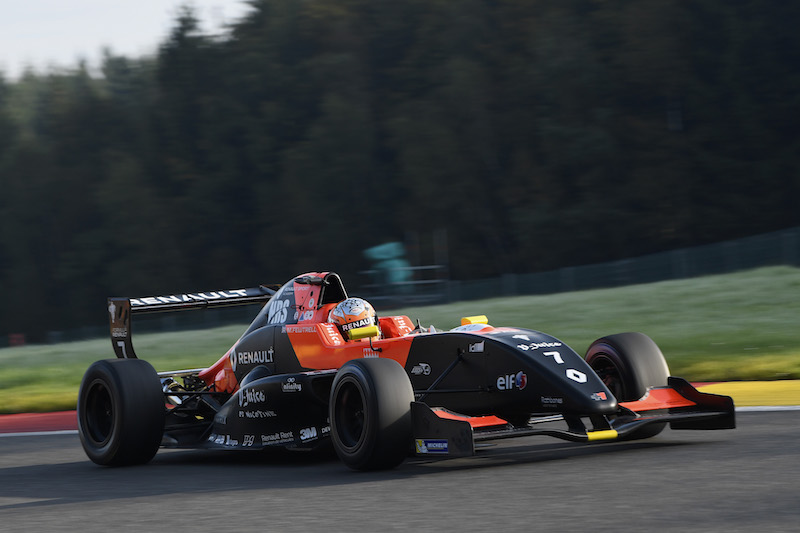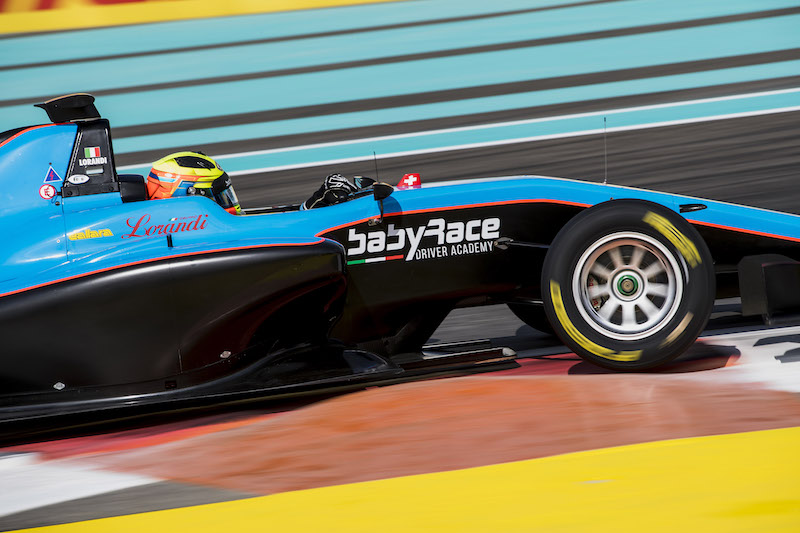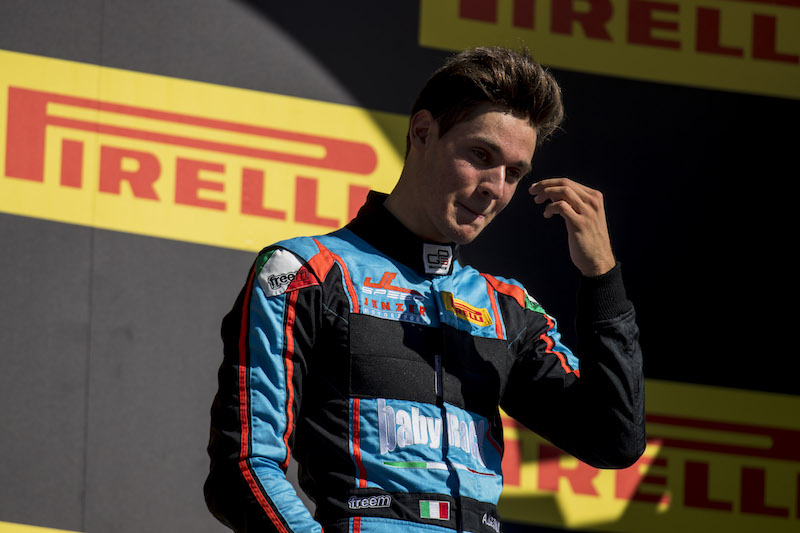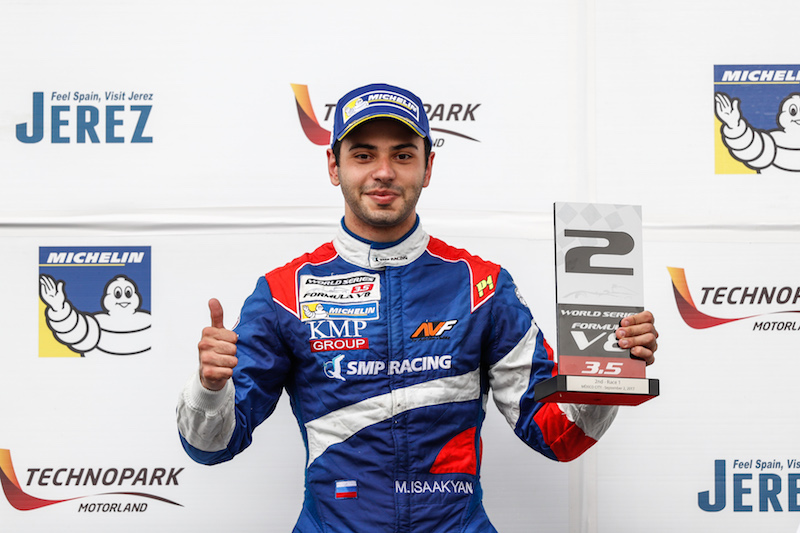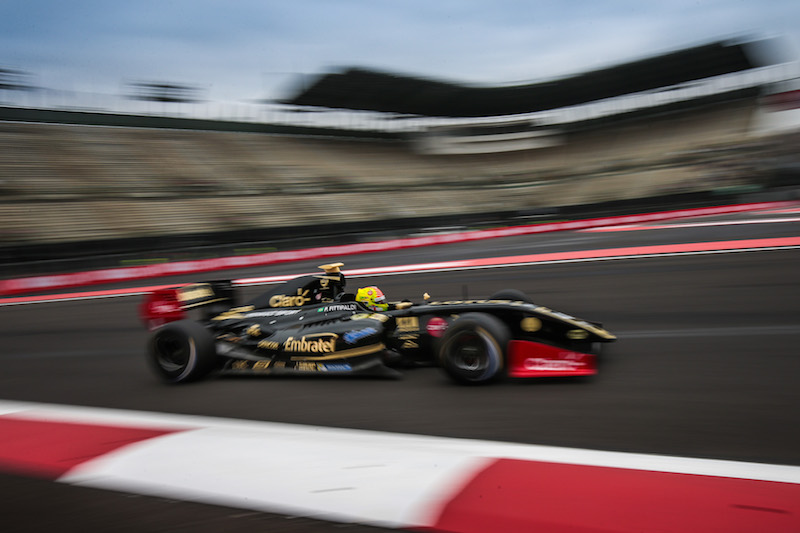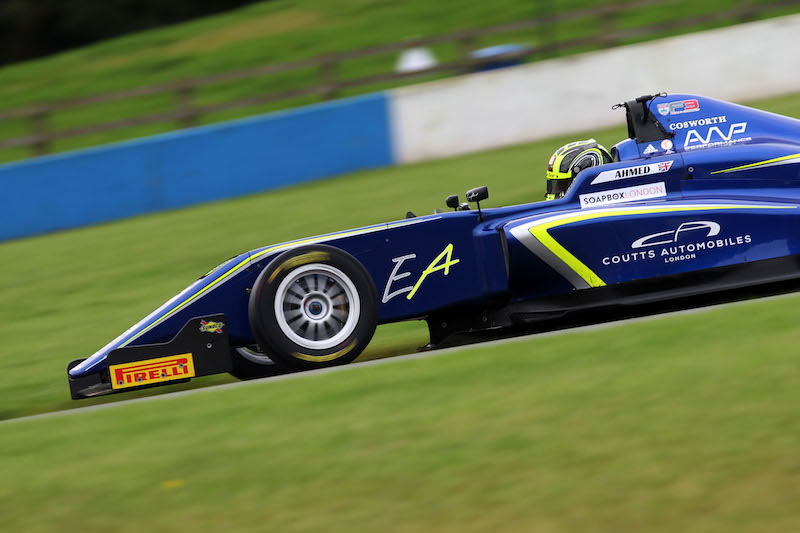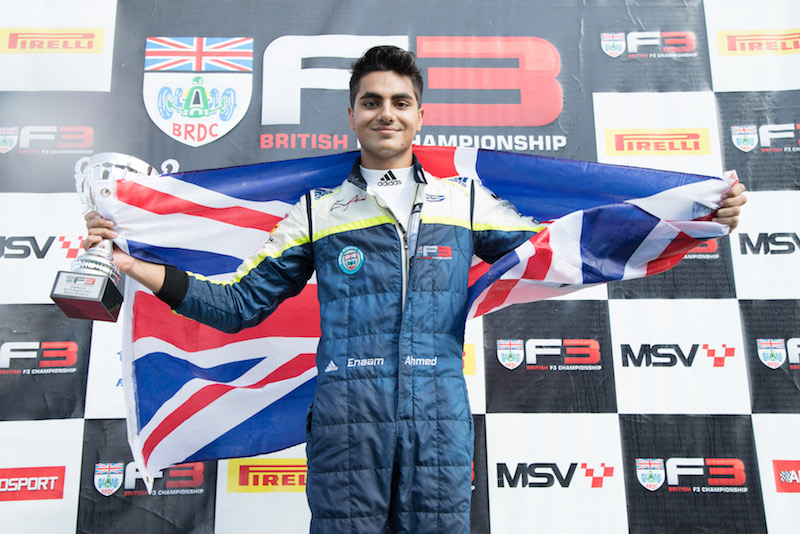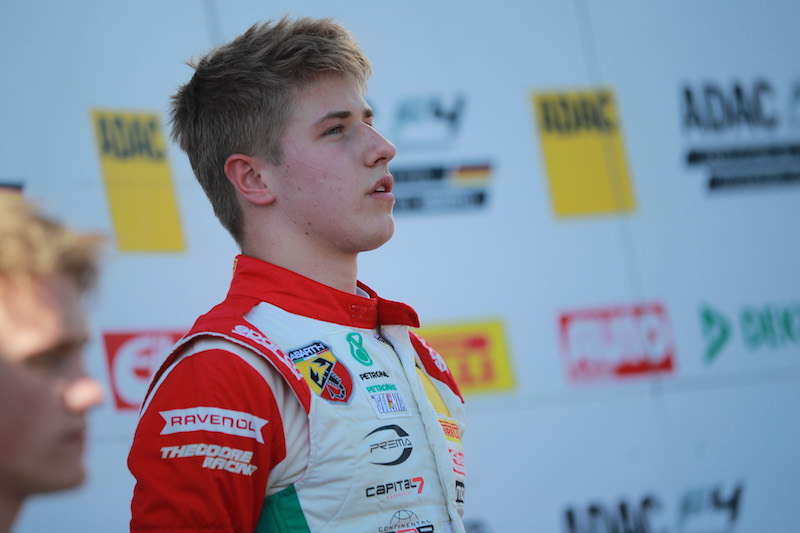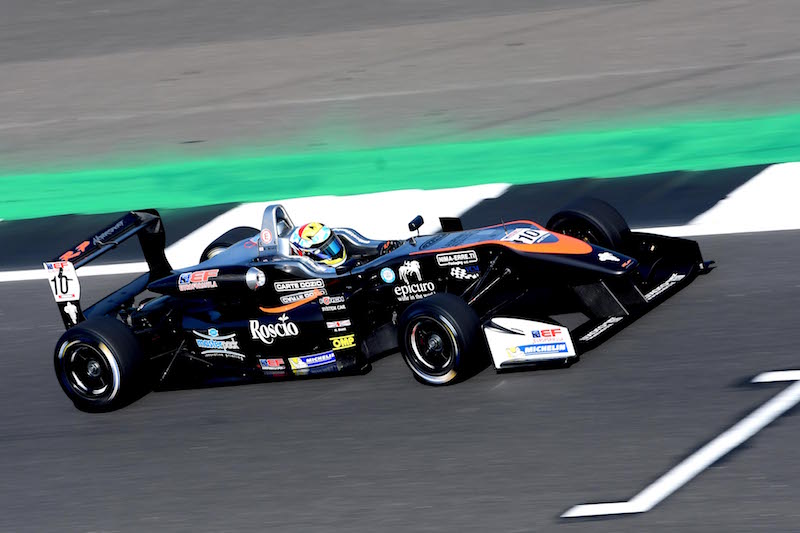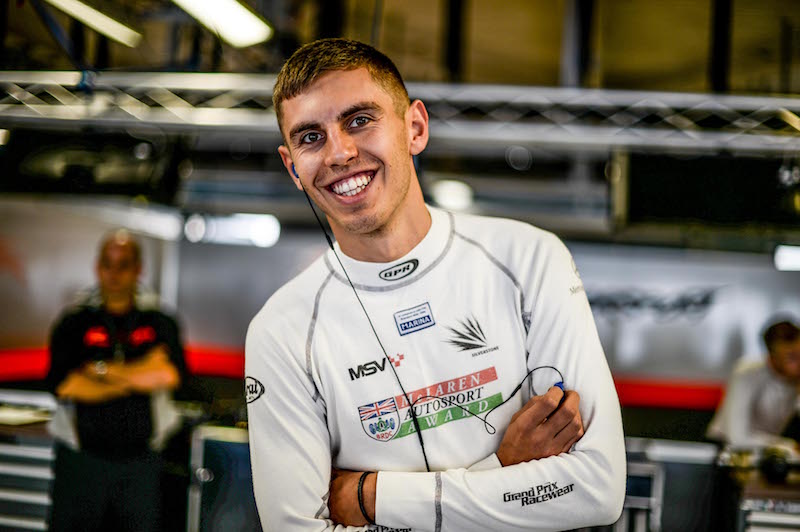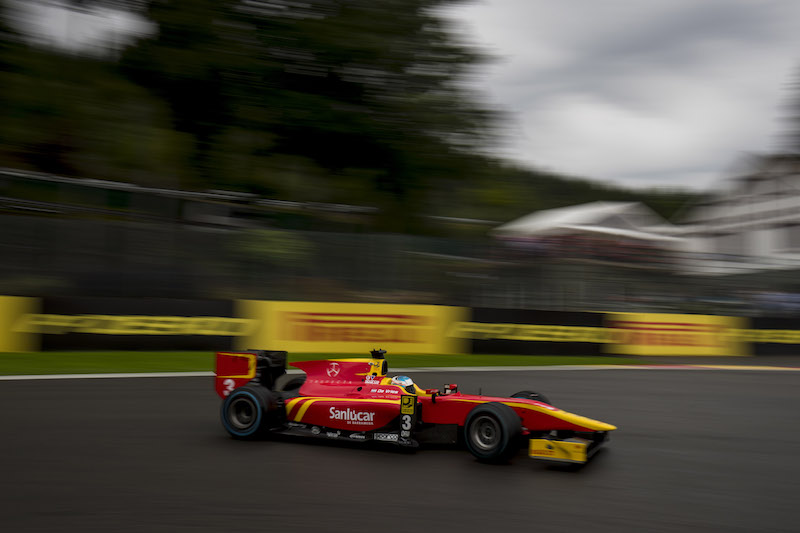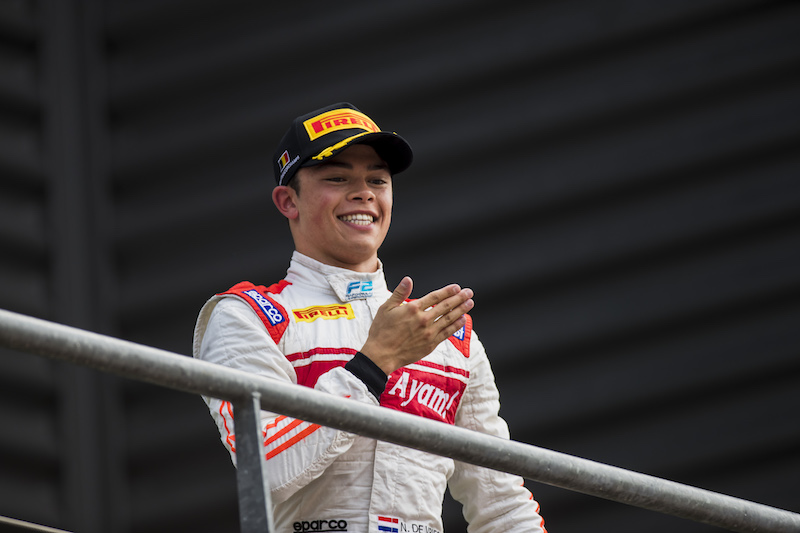The third part of our countdown of the best junior single-seater drivers of 2017, looking at those in positions 30 to 21.
See also
Part 1: 50 to 41
Part 2: 40 to 31
30. Max Fewtrell
Up 2
Formula Renault Eurocup rookie champion
After winning the British Formula 4 title in his first full year in single-seaters and being signed by the Renault Sport Academy, Fewtrell further solidified his promise by taking the Formula Renault Eurocup rookie title against a talented crop of first-year drivers.
A regular visitor to the podium and post-race press conferences as the top rookie finisher, the Briton would often voice frustration at not having the speed to be there for being in the overall top three. He managed it just once all year, but that was a victory, at the Red Bull Ring.
As was the case in F4, Fewtrell’s title win was based upon impressive consistency for his level of experience. He scored points in all bar four races – two of those being in Monaco, which was the only place he was uncompetitive. While he never finished second or third, there were five fourths, three fifths and three sixths.
Going forward, he could do with developing a more ruthless streak and finding the ultimate pace more often, but Austria was proof he can do that when everything comes together.
His Renault affiliation made a second Eurocup campaign an obvious decision for 2018, with a switch from Tech 1 Racing to R-ace GP likely. With none of the five drivers who finished ahead of him this year likely to return, the pressure will be on to contend for the overall crown.
29. Alessio Lorandi
New entry
Seventh in GP3
Even with his Pau Grand Prix triumph, Lorandi’s second season in Formula 3 with Carlin in 2016 didn’t do his reputation much good, particularly given the success the team has gone on to achieve since. But at the same time, the Italian racer has helped his cause with a strong season in GP3.
The final standings don’t show it, but the case can be made for Lorandi having been the strongest challenger to the dominant ART Grand Prix crew. It was certainly the case early in the season, with third in Barcelona and Silverstone making him the only non-ART driver to make it onto a race one podium twice all year. He was also best-of-the-rest in Hungary.
His Barcelona weekend was particularly excellent, working his way up from eighth and sixth on the grid respectively to finish both races in third, getting the most out of GP3’s new DRS system that required more strategic thought.
Lorandi’s Jerez win might have been straightforward from reversed-grid pole, but it was no less than he deserved.
He made life a little difficult for himself in qualifying – Silverstone was the only time he lined up inside the top seven – but his Jenzer team probably wasn’t a match for ART or Trident in this regard, and both he and Arjun Maini did a good job as a duo to keep the Swiss outfit competitive against those who benefited from having four sets of useful driver feedback.
It would be nice to see what Lorandi would be capable of driving for ART, but it looks like he will instead take them on with Trident. If anyone can stop the red-and-black armada next year, it could be that all-Italian combination.
28. Matevos Isaakyan
Re-entry (31st in ’14)
Formula V8 3.5 runner-up
Isaakyan built upon the promise of his rookie season to fight for the Formula V8 3.5 title in the championship’s final year.
SMP Racing placed Isaakyan and Egor Orudzhev with the team that Tom Dillmann won the 2016 title with, but AVF was never a threat for the outright speed of the Charouz-run Lotus squad, leaving the Russian duo to use their talent to try and halt Pietro Fittipaldi.
While the more experienced Orudzhev was unforgivably error-prone, Isaakyan put a couple of early retirements behind him to score consistently good results and gradually reel in Fittipaldi.
Isaakyan’s second win of the year and a second place at the Nurburgring put him to the top of the standings heading to the three fly-away rounds.
After Fittipaldi’s Mexico double, he failed to capitalise on his rival’s Austin off, but went to Bahrain only 10 points adrift and could easily have snatched the title if a transmission issue prevented him starting from pole for the first time all year.
While SMP drives Sergey Sirotkin and Robert Shwartzman towards Formula 1, both Isaakyan and Orudzhev appear set to be part of its new LMP1 project in the World Endurance Championship, having already won as a duo in the European Le Mans Series this year.
27. Pietro Fittipaldi
Re-entry (43rd in ’14)
Formula V8 3.5 champion
Fittipaldi was clearly the fastest driver in the final year of Formula V8 3.5 – taking 10 poles from a possible 18 – and even though he made life difficult for himself at times, he ultimately deserved the title.
He had struggled to make an impression for most of his rookie season in 2016 with Fortec, but the grandson of Emerson Fittipaldi looked immediately at home in the black-and-gold ‘Lotus’, and began the year in perfect fashion with a dominant double at Silverstone.
A series of poor starts then cost him at Spa and at Monza, but he would get on top of this and was always a better driver than Rene Binder and Alfonso Celis, and though a poor weekend at the Nurburgring left him trailing Isaakyan, he had superior pace in his car.
He rammed that advantage home in Mexico City – a home race for main backer Carlos Slim – only for the Miami-born Brazilian to then make a mistake in Austin. Isaakyan’s transmission issue in Bahrain saved him from a nervous finale.
Having got a title under his belt to add to the famous surname and the financial support, it’s natural that Fittipaldi has been talked about as Brazil’s next F1 driver, but he needs to perform in Formula 2 in order to make a convincing case.
26. Enaam Ahmed
New entry
BRDC British F3 champion
Ever since a?magnificent?Monday at Oulton Park, when he won all three races on the first day of the season, Ahmed claiming the BRDC British F3 title at the second attempt never looked in doubt.
At the next round at Rockingham, he followed his fourth win in a row with a pair of eighth places after two first-lap incidents, reducing his championship lead to 15 points over Carlin team-mate Cameron Das, who had beaten him to top qualifying at both circuits.
This seemed to only make Ahmed stronger however, and even as the title looked more and more of a certainty, he continued to push for wins and to be as dominant as possible. That desire was typified by the risky late-braking move on Das that won him the final race at Donington Park, having already wrapped the title up at the previous round.
Ahmed didn’t really face equally strong competition driving equally good machinery – team-mate James Pull was runner-up without winning a race, while Toby Sowery was talented and experienced enough to have offered a much tougher challenge if he too drove for Carlin – but he dealt with the opposition he did have emphatically and demonstrated good progress from the driver who initially struggled to turn his superb karting career into single-seater success.
The move into European F3 for 2018 is a risky one, but one that he knows he now needs to make to prove himself against the best.
25. Juri Vips
New entry
ADAC F4 champion
Tipped as a championship favourite in his second season with Prema, Vips won the opening race of the ADAC Formula 4 campaign and then used consistency to claim the title in an ultra-close and dramatic finale.
After his Oschersleben triumph, only one further win would follow in the reversed-grid race at the Red Bull Ring, but the Estonian finished all but one of the 21 races inside the top eight.
That proved crucial in winning the championship by four-and-a-half points over rookie team-mate Marcus Armstrong, who was quicker but not as effective at grinding out results.
While there have to be question marks about his ultimate pace, Vips’ consistency was commendable in the world’s most competitive F4 series, home to five top-line teams and where on-track incidents are common.
He appears set to move up to European F3 next year, not with Prema but with Motopark, with whom he enjoyed a competitive debut at Hockenheim in October.
24. Anthoine Hubert
Up 4
Fourth in GP3
There’s no denying that Hubert was the worst of ART’s GP3 drivers this year, but there isn’t necessarily much shame in that, and he still put in some noteworthy drives.
He led George Russell in the first race at Silverstone after making a better start than the local golden boy, before being passed under DRS. The Frenchman later battled Russell and Jack Aitken for the win in Monza, but ultimately ended up third best.
A couple of other chances to break his win duck in reversed-grid races went missing before they had even started: he was recovering from 17th on the grid at Spa into the points positions when his car broke down (his three team-mates all lost more points from similar issues during the year), while he was due to start the season finale in Abu Dhabi from pole before being penalised for not observing yellow flags.
Those two Saturday races were the only races all year in which he failed to score points in an otherwise solidly consistent season, that wasn’t without speed either. While he was the worst ART driver, he was the best driver without F1 support, and only the exceptional Russell was stronger among rookies.
If Hubert returns with ART next season, he will face stiff competition from within his own team once again, but he won’t need to make a huge step forward to start racking up the wins, and his consistency could be a real strength.
23. Harrison Scott
Up 11
Euroformula Open champion
Scott showed his ability with wins in the Formula Renault Eurocup last year against Lando Norris despite very limited resources, and while Norris was winning the European F3 title in 2017, Scott did the same in Euroformula Open but in crushing style.
That statistics are impressive: 12 wins, 11 pole positions and 12 fastest laps from 14 starts. Not bad given that he only signed to do the season with RP Motorsport after winning the first two races at Estoril, which in turn came after limited pre-season mileage.
Such dominance does raise question marks about the competition, but you need only look at how well Ferdinand Habsburg and Colton Herta performed this year to recognise the increasing standard of Euroformula Open. Scott theoretically faced similar opposition this year, in a Fortec Formula Renault graduate run by Drivex (Nikita Troitksiy) and a Carlin race-winner in British F4 (Devlin DeFrancesco).
Understandably keen to move his career on with momentum, Scott has targeted GP3 for 2018 and could be involved in RP Motorsport’s move into Pro Mazda, but it would also be good to see him follow Habsburg’s lead and use his mastery of the Dallara F3 chassis to take on the European championship, in which he has tested with Hitech.
22. Felipe Drugovich
New entry
Seven-time ADAC F4 winner and MRF Challenge leader
After a solid rookie campaign, Drugovich emerged as an exciting prospect during 2017, when he was the quickest and winningest driver in ADAC F4 and later starred in Euroformula Open and the MRF Challenge.
Following a move to Van Amersfoort Racing, the Brazilian claimed seven wins in ADAC F4, compared to rivals Marcus Armstrong and Juri Vips’s three and two wins respectively. He won at all six circuits the series visited.
Inconsistency cost him the championship, with six non scores, but he can be faulted for very little of it, like being innocently taken out at the Nurburgring and the Sachsenring during the championship run-in.
When his Prema-run rivals hit trouble in qualifying at the Hockenheim decider, Drugovich won the first race to take the championship lead and should have gone further clear in race two, but a battery issue prevented him from starting and ultimately ended his title chances.
At the same circuit three weeks later he qualified 14th, ahead of team-mate Joey Mawson, on his F3 debut with VAR, before claiming a pole and a win (in separate races) in his first outing in Euroformula Open in Barcelona.
Next, he returned to the MRF Challenge, and after more bad luck eliminated much of his early advantage, four dominant wins on his first time at Yas Marina got him one hand on the title ahead of February’s finale in Chennai.
21. Nyck de Vries
Up 15
Seventh overall and second best rookie in F2
De Vries showed his quality in a disrupted first season in Formula 2, driving for two different teams, neither of whom were in the best position in 2017 for differing reasons.
The Dutch driver was the third-best qualifier on average position, with good speed for both Rapax – which was operating on limited resources – and Racing Engineering, which had endured a torrid season before de Vries swapped places with Louis Deletraz ahead of Spa.
He lined up alongside Charles Leclerc on the front row for his debut in Bahrain, and would end the season as the second-best rookie to the champion.
Race results were harder to come by, and he found extracting the best from the tyres to be a particular challenge, but there were still some notable highlights.
With Rapax, victory in the Monaco sprint race after beating veteran team-mate Johnny Cecotto off the line was one, as was battling Leclerc for victory in Baku and a double podium at the Hungaroring. With Racing Engineering, he finished second in his second race and led most of the wet Monza feature race.
Getting the lead seat at Prema for 2018 thanks to his good relationship with Sean Gelael (whose father helped fund him this season) now gives de Vries a fine opportunity to turn this promise into something bigger.
